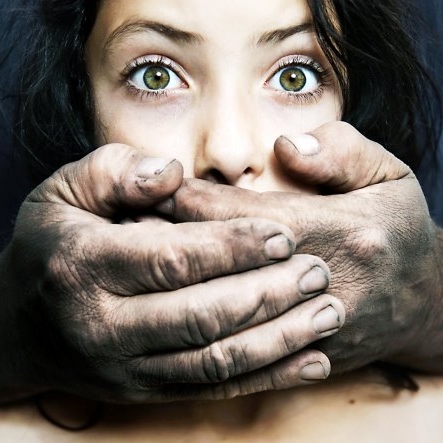click to dowload our latest edition
CLICK HERE TO SUBSCRIBE TO OUR NEWSLETTER


Published
7 years agoon
By
adminNICOLA MILTZ
“Anyone who denies this is being naive,” says Rebbetzin Wendy Hendler of Koleinu SA, an organisation offering a helpline for victims of abuse in the Jewish community.
“The numbers are worrying. It happens in our schools, it happens at our shuls, the prevalence of abuse is concerning,” she said.
According to Hendler, worldwide statistics reveal that one in four girls and one in seven boys are victims of abuse. “We have absolutely no reason to believe that it is any different in the Jewish community.”
This comes in the wake of a flood of horrifically disturbing media reports concerning incidents of rape, murder and abuse against women and children in South Africa.
“The Jewish community is not immune,” says Tova Goldstein, head of abuse programmes at the Chevrah Kadisha’s Social Services department.
“The increase may actually be a reflection of the number of incidents being reported.” she said
One of the more disturbing things to come to light is the incidence of child on child abuse.
“There are many cases of child on child abuse. It is usually perpetrated by an older child on a younger sibling, cousin or friend. And sometimes it can be violent.”
These perpetrators are acting out “learnt behaviours” due to having been exposed to abuse themselves.
“They too need help,” said Hendler.
There have been cases involving children as young as five and seven performing oral sex and it is unknown whether this is due to Internet accessibility or child abuse.
Another area of concern surrounds shul safety. In several incidents, children are being abused at shuls during Shabbos when parents are either davening or enjoying the brocha after the service.
“Children have a lot of freedom during shul to run around unsupervised. An unlocked room on the campus or shul grounds is an open invitation for some child to get molested.”
Koleinu will be rolling out an extensive “Shul Abuse Policy”, which it hopes will gain the support of rabbis countrywide.
The policy will cover every aspect of the shuls’ functioning, including things like thorough staff background checks, having a roster of adults to supervise children during services, making sure there is a visual line of sight at all times, ensuring youth directors know about appropriate social media protocols.
“It is inappropriate for a youth director to WhatsApp a child individually; this could be a way of grooming a vulnerable child,” said Hendler.
Said Goldstein: “Our biggest aim is to get the community into gear, to accept that this is happening, instead of sweeping it under the carpet and to ask what measures it can take to prevent it from happening.”
Hendler says that while local organisations involved in combating abuse are fully aware of this tragic, social reality, the community finds it hard to believe.
“On the one hand we encounter reactions of utter shock and horror. There is such a blind spot, a total inability to even conceptualise and believe that this is happening under our noses.”
While on the other hand, she said, parents are desperate for information and skills to empower their children to keep safe. “Parents are so thirsty for knowledge because they are hearing things. Sexual abuse is an epidemic worldwide and has become part of everybody’s experience,” she said.
Numerous workshops, presentations to teachers and parents and talks to small groups in the community, at people’s homes are becoming common place.
“Training and education play a big role,” said Hendler.
“Stranger danger is a myth. In 90 per cent of cases the abuser is someone close to the child, a family member or friend of the family, who is loved and respected by the child.
“He is someone who has groomed the family over time and now enjoys access to the child and privacy, two essential things he needs to perpetrate his crimes. When you look at him you would have no idea he is a paedophile.”
Both Hendler and Goldstein are hopeful, though, that the situation will improve over time, so long as communication and information channels are available, unlike in the past when the entire subject was taboo.
“People are becoming more aware, children are being encouraged to communicate openly with their parents and parents are likewise listening to their children.
Children are being taught specific skills about how to handle uncomfortable situations.
Safety rules are being taught at schools. For example, children must know they can say “No” or “Go away!”, and when to “Tell an adult”.
“The walls of silence are slowly being weakened; people are being encouraged to come forward and report incidents. And there is so much help out there.”
“If one child is molested, that is one child too many. If we save one child, all the talks, workshops and policies would have been worth it,” said Hendler.

Dr Billy Levin
Jun 4, 2017 at 7:19 am
‘Many years ago Roger Sperry was awarded the Nobel Prize for his split brain functions research. The significance of this is certainly the new understanding of how the human brain functions and most important understanding dysfunctional brains , so many who have inherited their problem. They, with a talent for doing or saying without first thinking would be the most frequent abusers in our society. They cause trouble but seldom are recognized with a condition that can be diagnosed and treated medically. 40% of people in jail have undiagnosed ADHD. They abused and were jailed without establishing why they were abusers. Abusers are everywhere and are abused by ignorant society. ‘